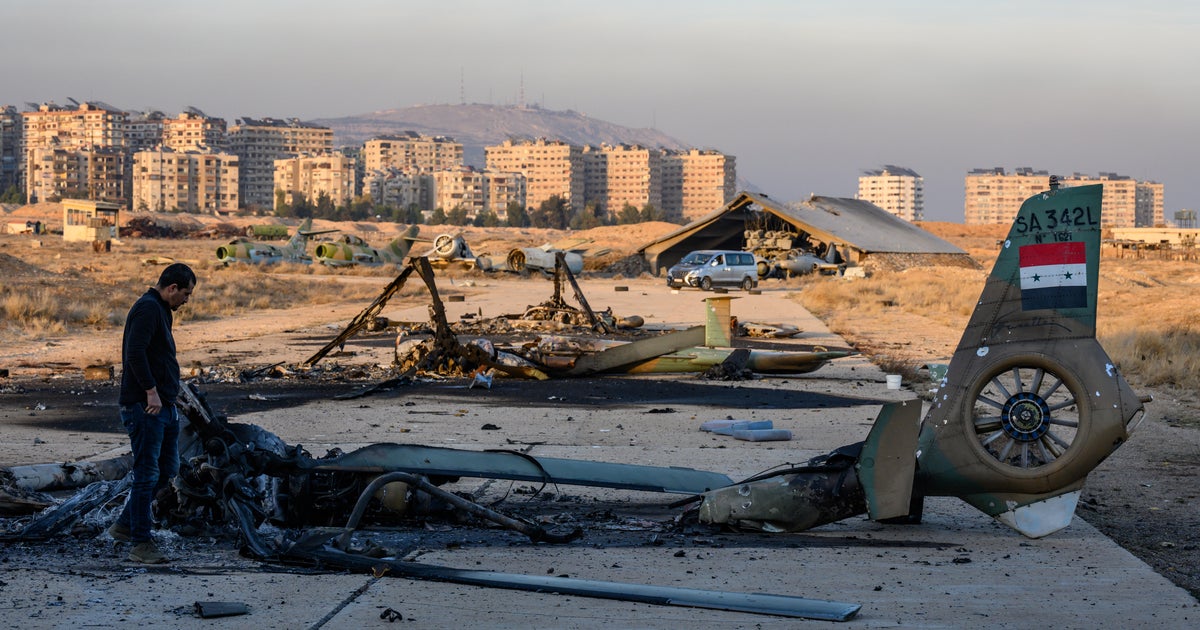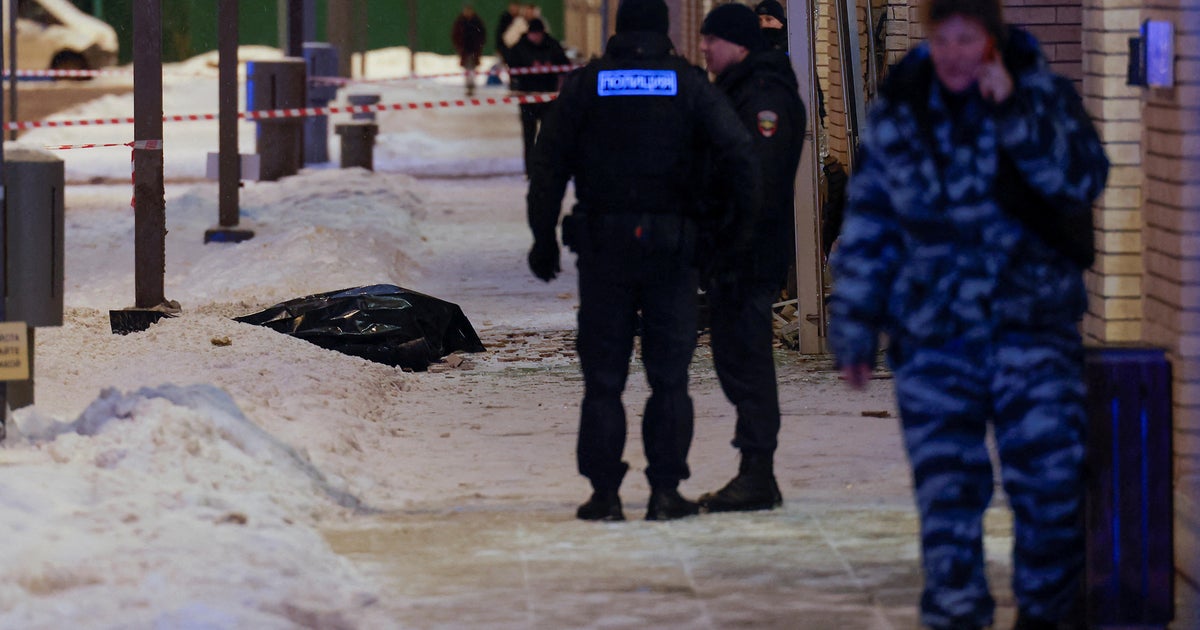North Korea touts "nuclear war deterrence" with submarine cruise missile test amid U.S.-South Korea drills
Seoul, South Korea — The South Korean and U.S. militaries launched their biggest joint military exercises in years Monday, as North Korea said it tested submarine-launched cruise missiles in an apparent protest of the drills it views as an invasion rehearsal. North Korea's launches Sunday signal the country likely will conduct provocative weapons testing activities during the U.S.-South Korean drills that are to run for 11 days. Last week, North Korean leader Kim Jong Un ordered his troops to be ready to repel its rivals' "frantic war preparation moves."
The South Korean-U.S. drills include a computer simulation called the Freedom Shield 23 and several combined field training exercises, collectively known as the Warrior Shield FTX.
The South Korean and U.S. militaries said earlier that the computer simulation is designed to strengthen the allies' defense and response capabilities amid North Korea's increasing nuclear threats and other changing security environments. They said the field exercises would also return to the scale of their earlier largest field training called Foal Eagle that was last held in 2018.
A recent U.S. military statement said the field exercises are to further enhance the two militaries' "cooperation through air, land, sea, space, cyber and special operations, and improve upon tactics, techniques and procedures."
North Korea said in state media that its launches of two cruise missiles from a submarine off its east coast showed its resolve to respond with "overwhelming powerful" force to the intensifying military maneuvers by the "the U.S. imperialists and the South Korean puppet forces."
The North's official Korean Central News Agency called the missiles "strategic" weapons and said their launches verified the operation posture of the country's "nuclear war deterrence." This implies that North Korea intends to arm the cruise missiles with nuclear warheads.
It said the missiles flew for more than two hours, drawing figure-eight-shaped patterns and demonstrating an ability to hit targets 930 miles away. The missiles were fired from the 8.24 Yongung ship, KCNA said, referencing a submarine that North Korea used to conduct its first submarine-launched ballistic missile test in 2016.
The reported launch details show Japan, including U.S. military bases in Okinawa, is within striking distance of the cruise missiles, if they are fired from the North's eastern waters, said Kim Dong-yub, a professor at the University of North Korean Studies in Seoul. He added the weapons could reach even the U.S. Pacific territory of Guam if a North Korean submarine can operate further from its shore.
Sunday's actions were the North's first underwater missile launches since it test-fired a weapon from a silo under an inland reservoir last October. Last May, the country test-launched a short-range ballistic missile from the 8.24 Yongung submarine.
North Korea's command of submarine-launched missile systems would make it harder for adversaries to detect launches in advance and would provide the North with retaliatory attack capability. Experts say it would take years, extensive resources and major technological improvements for the heavily sanctioned nation to build a fleet of several submarines that could travel quietly in seas and reliably execute strikes.
Sunday's tests were the North's first known launches of cruise missiles from a submarine as its previous underwater launches all involved ballistic missiles. It's also the first time for North Korea to fire multiple missiles from a submarine on a single launch event, observers say.
"At a time when its efforts to build (bigger submarines) have reported little progress due to the sanctions, North Korea wants to show it's still almost developed the types of missiles that can be fired from a submarine," said Moon Keun-sik, a submarine expert who teaches at Kyonggi University in South Korea.
Moon said the North's submarine-launched cruise missiles were likely deigned to strike approaching U.S. aircraft carriers and big ships or other shorter-range targets on the ground, while the North wants to use submarine-launched ballistic missiles to hit targets in the U.S. mainland.
South Korea's military said the North Korean launches were made in waters near the North's port city of Sinpo, where the country has a major submarine-building shipyard. Military spokesperson Lee Sung Jun said South Korean assessments didn't match the launch details North Korea provided but didn't elaborate.
Lee said South Korea's military has been upgrading assets required to deal with North Korean submarine threats. South Korea's Unification Ministry separately called the North Korean launches "very regrettable," saying North Korea nothing to gain by raising tensions on the Korean Peninsula.
After a record number of missile tests last year, North Korea has carried out several additional rounds since Jan. 1. Before Sunday's launches, the country test-fired an intercontinental ballistic missile potentially capable of reaching the mainland U.S.; short-range, nuclear-capable missiles designed to hit South Korea; and other weapons.
Experts say Kim, who sees his nuclear arsenal as his best security guarantee, is trying to pressure the United States into accepting the North as a legitimate nuclear power and relax international economic sanctions.
North Korea sees regular South Korea-U.S. military exercises as a major security threat, though the allies say their drills are defensive. Some observers say North Korea uses its rivals' drills as a pretext to test weapons and modernize its nuclear arsenal to secure an upper hand in dealings with the United States.
In past years, the U.S. and South Korea cancelled or scaled back drills to pursue diplomatic efforts to denuclearize North Korea and out of concern about the COVID-19 pandemic. The two countries once more expanded exercises after North Korea conducted more than 70 missile tests in 2022 and adopted an increasingly aggressive nuclear doctrine.
In recent weeks, the U.S. flew long-range bombers for drills with South Korean fighter jets. South Korea's Defense Ministry said the deployments demonstrated U.S. commitment to use a full range of military capabilities, including nuclear, to defend its Asian ally in the event of outright conflict with North Korea.
Last Thursday, Kim supervised a live-fire artillery drill simulating attacks on a South Korean airfield. He ordered his military to maintain the capability to "overwhelmingly respond " to enemy actions, which he said included "all sorts of more frantic war preparation moves" according to KCNA.
North Korea's Foreign Ministry on Monday also accused the United States and other Western countries of plotting to call a U.N. Security Council meeting to discuss what it called its "non-existent human rights issue." It said North Korea will take "the toughest counteraction against the most vicious hostile plots of the U.S. and its followers."





